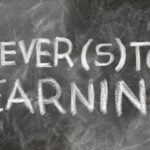The following is a draft slice of an upcoming curriculum supplement I am writing for Bedford / St. Martin’s press. I will be using the blog to post chunks of the supplement and open up discussions on the topics. While the supplement is aimed at FYE instructors, the ideas will be broadly applicable in education.
An huge welcome to all the FYE folks I met at the national conference this last spring. Thanks for stopping by. I’m very excited to have this conversation with you, the hoped for readers of this curriculum supplement. As always, change is coming, and FYE, again, is a big part of the front line. Thanks for all your work for the students, and thanks for being interested in helping them in this new world.
Old Values, New Technology
“We tend to overestimate the effect of a technology in the short run and underestimate the effect in the long run.”- Roy Amara, former president of The Institute for the Future
It’s normal for new things to go through a “hype cycle” where proponents vastly overpromise benefits. This hype helps fuel the backlash. There are lots of fears embedded in the backlash.
Past the backlash, it’s easy to go too far the other way and just throw up your hands and rush in. It’s easy to get caught up in comparing one website or tool to another. Should we use Facebook or Twitter? Then the discussion shifts to who will do the work of the new projects.
Reacting, and fixating on tools, is partially a function of the pace of change. There’s a sudden sense of “everyone else is doing it” and so action becomes an imperative.
The only fix for this is anchoring initiatives in goals. Only then can we measure results for future optimization. Only then can we evaluate a new tool against our goals. Only then can we learn.
As educators, we have a huge opportunity to use these new social platforms to enhance the student experience. There’s an opportunity to have a huge effect in the long run. We won’t get it quite right the first time. We’ll have to try some things, measure results and shift around.
So let’s start with the goals.
The Theoretical Perspective
Some students come to embrace their college experience – they get involved in campus events, grow, learn, join clubs and subsequently participate in alumni affairs – while others seem to quietly fall off the map. Twenty five percent of first year students will leave their school in their first year. Researchers have developed a series of models to help make sense of these completely different outcomes. They’ve formed models to hypothesize about how we can best enhance the student experience, grow retention rates, increase student success and satisfaction and, yes, increase endowments.
Some of the popularly accepted models, which may be familiar to you, include:
• Chickering’s 7 Vectors
• Tinto’s Model of Retention
• Astin’s Involvement Theory
• Barefoot’s Relevant Models of Success
In Chickering’s Model, students are assessed along a series of 7 vectors- managing emotions, establishing identity, developing purpose, etc. As educators, then, activities, programs and initiatives are geared towards moving students forward in their various vectors. By first assessing students along this core set of criteria, and then working to build up necessary character traits and skill-sets, Chickering felt universities could help the learner grow and thereby increase retention and success rates. The challenge for the university is that implementation of this model is dependent on individual self-assessments and outcome rubrics mapped to possible experiences. Differentiated instruction is a substantial challenge in even a small classroom; as classrooms grow, it’s nearly impossible without assistance from technology.
Tinto and Astin stress the importance of being – and feeling – connected to the place in which you learn and live. The more ties one has to the people and ideas of a school, through activities, friends and meaningful experiences, the more likely one is to stick around. Astin’s research showed, unsurprisingly, that involved students are more likely to have better grades, graduate, and be satisfied with the experience. While these models have been around for decades, schools still struggle to increase involvement and engagement. In 2005, the National Survey of Student Engagement said that 60% of students at four year schools and 84% of students at two year schools, would never participate in a college sponsored activity the entire time they are at school.
Barefoot believes that fostering student commitment and motivation is the most important aspect of the first year experience, as success with this will mitigate other challenges. So how do we build commitment and motivation? Barefoot stresses the importance of role models, specifically relevant models – those individuals who have been through similar situations, or have similar backgrounds, and been successful. Students need to see an example of their own possibilities. Success is a product of connecting those just starting on their educational journey with “people like them,” who have come before and been successful.
At their essence, all four models point towards a hierarchical path to success in education. We know the basic steps. Students must first establish themselves and feel comfortable. This comes from orientation, from finding people like themselves, developing friendships, and participating in relevant communication. They will explore their identity in relationship with others.
Once the social foundation is set, some students will begin to explore connection around areas with which they identify. Their priority will shift from general social prioritization (“I want people to hang out with”) to topic prioritization (“I want to hang out with people that like physics”). This connection may be in a major, student groups, around a hobby, career, or a unique intellectual pursuit. The student will explore and grow their competence primarily in comparison with peers who are similarly inclined. Through their new peer group affiliation and participation, some will find a combination of competence and confidence, and become recognized leaders in the peer group.
For these students then, the final stage is contribution. Their efforts become a model for others. At this final, most involved level, students actively contribute to their environment. Some will lead by example, others will consciously dedicate themselves to helping, becoming mentors and guides for other students. These model students are the institution’s greatest resource. As examples of progress for Chickering’s Vectors, Astin’s Involvement, Barefoot’s role models, or social super connectors to facilitate Tinto’s goals, these students are paramount.
The progression from comfort to connection to contribution is the path of success. At each stage there lies the risk of either not succeeding within that stage or simply settling for it. Some students won’t find any social comfort and will leave for home. Other students will find social comfort in a group that they party with. This party group becomes their clique and they never move on. Other students connect to a topic group, but they come to see that group as the end-all be-all, never shifting their thinking to a bigger scope that would allow them to contribute to students outside of their group.
Similar to Maslow’s hierarchy of needs, with its peak of “self-actualization,” not all students will make it to the contribution apex. Some will just need a little time, and they will move up well after they receive their degree. Others will take even longer.
Education is nothing if not hopeful. The goal of the institution is to move all students up this pyramid.
Any initiatives or technology must work towards this goal. They must also measure and prove their efficacy against this goal.


